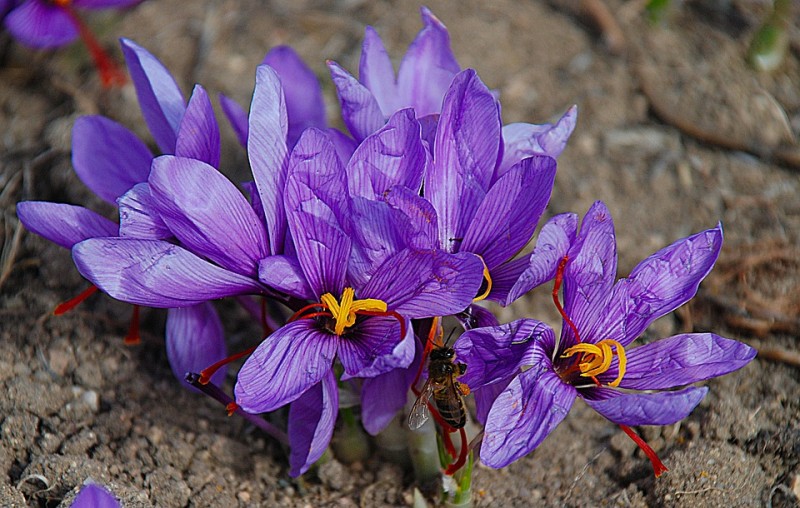
Saffron, the dazzling crimson spice, is not only a feast for the eyes but also an indulgence for the senses. With a price tag that surpasses even gold, it holds a coveted spot as the world's most expensive spice. This article delves into the captivating story behind saffron, exploring its origins, harvesting methods, culinary uses, medicinal properties, and the demand that sustains its lofty value.
The Origins of Saffron
Saffron's journey can be traced back to ancient civilizations, with its origins believed to lie in the Middle East, particularly Iran and Greece. Historically, it was highly treasured for its enchanting aroma, distinct flavor, and vibrant hue, making it a symbol of luxury, love, and royalty.
Harvesting the Precious Stigma
The allure of saffron lies in its delicate and laborious harvesting process. Each saffron strand comes from the stigma of the Crocus sativus flower, which must be handpicked with precision during the brief autumn flowering season. This meticulous approach results in the production of just a small quantity of saffron per flower, contributing to its exorbitant price.
Saffron's Culinary and Medicinal Uses
4.1 Culinary Applications
Saffron's enchanting essence has made it a culinary gem, gracing a myriad of dishes with its distinctive taste and vivid color. From paellas to biryanis, saffron adds a touch of sophistication, turning ordinary meals into extraordinary feasts.
4.2 Medicinal Properties
Beyond its culinary merits, saffron boasts a long history of medicinal applications. It is believed to possess various health benefits, including antioxidant properties, mood enhancement, and potential antidepressant effects. However, it is essential to use saffron judiciously and consult with healthcare professionals for its safe consumption.
The Art of Identifying Pure Saffron
5.1 Understanding Adulteration
Given its high value, saffron is often prone to adulteration with cheaper substitutes. As consumers, it is crucial to be aware of the prevalence of counterfeit saffron and its potential negative impact on health and finances.
5.2 Testing Saffron Authenticity
Several methods can be employed to verify the authenticity of saffron, such as aroma, color, and water tests. Understanding these techniques can aid buyers in making informed decisions and safeguarding against fraudulent purchases.
The Global Demand for Saffron
6.1 Saffron and Its Cultural Significance
Saffron transcends culinary boundaries and holds cultural significance in various traditions and ceremonies worldwide. It is a symbol of prosperity, joy, and purity in weddings, religious rituals, and festivals.
6.2 Saffron Trade and Economy
The global demand for saffron has led to a thriving trade market, contributing to the economic growth of saffron-producing regions. However, sustainability and fair trade practices are essential to preserve this precious resource for future generations.
Growing Saffron: Challenges and Rewards
Cultivating saffron is an art that demands dedication, patience, and expertise. It is not without its challenges, as saffron is sensitive to environmental factors and requires meticulous care. Yet, the rewards of producing this treasured spice can be fulfilling for farmers and consumers alike.
Saffron: A Sustainable Spice
As awareness of environmental conservation grows, sustainable saffron cultivation practices are gaining prominence. Emphasizing eco-friendly methods can ensure the longevity of saffron production without harming the delicate ecosystem it thrives in.
Fun Facts About Saffron
The Future of Saffron: Preserving a Priceless Treasure
With climate change and environmental pressures posing challenges to saffron production, safeguarding the future of this exquisite spice becomes paramount. Collaboration between farmers, researchers, and policymakers is vital to ensure the preservation of saffron's legacy.
In the world of gastronomy and beyond, saffron reigns supreme as the most expensive spice, cherished for its rich history, incomparable flavor, and luxurious hue. Its allure continues to captivate culinary enthusiasts, health-conscious consumers, and those seeking a connection to ancient traditions.
From keeping digestion healthy to getting rid of acne, know the benefits of neem leaves